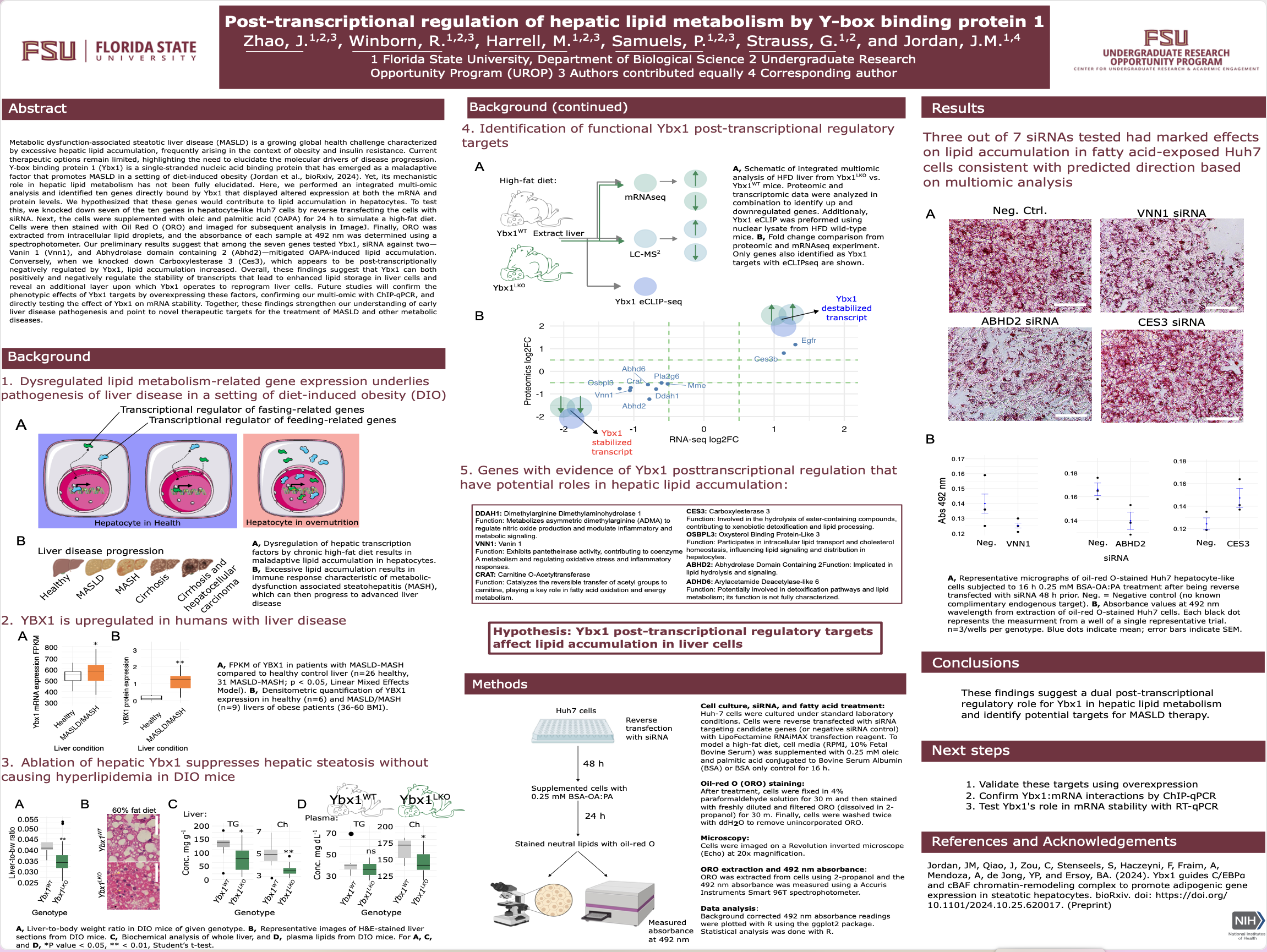Research Symposium
25th annual Undergraduate Research Symposium, April 1, 2025
Mia Harrell Poster Session 4: 3:00 pm - 4:00 pm/ Poster #217

BIO
Mia Harrell is a first-generation college student from Sebastian, FL with a deep commitment to increasing inclusivity in healthcare. Driven by her innate curiosity, affinity for science, and passion for patient-centered care, Mia aspires to serve rural communities and individuals with exceptional abilities, particularly those with Down syndrome and neurodivergence.
Her interest in research began in high school, where she earned her BACE certification through a biotechnology program, equipping her with foundational laboratory skills. She has since expanded her expertise through her work in Jordan Lab, drawn to its innovative approach to medicine. This research, focused on developing non-invasive and highly specific treatments, aligned with her goal to address critical health disparities.
With obesity affecting over 40% of adults in the United States and contributing to life-threatening conditions such as heart disease and diabetes, Mia recognizes the urgency of advancing targeted medical interventions. Her work in the lab represents a step toward more effective, patient-tailored solutions, reinforcing her commitment to bridging the gap between scientific discovery and equitable healthcare access.
Ultimately, she aims to integrate research and clinical practice to create a more inclusive and effective healthcare system for all.
Post-transcriptional regulation of hepatic lipid metabolism by Y-box binding protein 1
Authors: Mia Harrell, Dr. James JordanStudent Major: Interdisciplinary Medical Sciences: Clinical Professions
Mentor: Dr. James Jordan
Mentor's Department: Biological Science Mentor's College: Arts and Sciences Co-Presenters: Jack Zhao, Rebekah Winborn, Paulos Samuels
Abstract
Metabolic dysfunction‐associated steatotic liver disease (MASLD) is a growing global health challenge characterized by excessive hepatic lipid accumulation in the setting of obesity and insulin resistance. Current therapies remain limited, underscoring the need to identify molecular drivers of disease progression. Y‐box binding protein-1 (Ybx1) is a single‐stranded nucleic acid binding protein implicated in MASLD in diet‐induced obesity (Jordan et al., bioRxiv, 2024), yet its role in hepatic lipid metabolism remains unclear. We performed an integrated multi‐omic analysis and identified ten genes bound by Ybx1 that displayed altered mRNA and protein expression. We hypothesized that these genes contribute to lipid accumulation in hepatocytes. To test this, we knocked down eight of these genes in hepatocyte‐like Huh7 cells using siRNA. Cells were then exposed to 0.25 mM oleic and palmitic acid for 16 hours to mimic a high‐fat diet, stained with Oil Red O, and analyzed using ImageJ. Lipid content was quantified by extracting Oil Red O from intracellular droplets and measuring absorbance at 492 nm. Preliminary results indicate that among seven genes with transcripts stabilized by Ybx1, siRNA against three—Carnitine O-Acetyltransferase (CRAT), Vanin 1 (Vnn1), and Abhydrolase domain containing 2 (Abhd2)—reduced lipid accumulation. In contrast, knockdown of Carboxylesterase 3 (Ces3), a gene negatively regulated by Ybx1, increased lipid storage. These findings reveal a dual regulatory role for Ybx1 in hepatic lipid metabolism and identify potential targets for MASLD therapy. Future work will validate these targets using overexpression, confirm Ybx1:mRNA interactions by ChIP‐qPCR, and test Ybx1’s role in mRNA stability with RT-qPCR.
Keywords: Liver, Obesity, Epigenetics, Nutrition, RNA


